Monte Albán and the origins of Oaxaca town
During my visit to Oaxaca state, when I stayed in the Hotel Aitana, I could not miss the archeological zone just 6 km from the centre of Oaxaca, Monte Albán. In Europe we do not really know about it, which is bad because it was very important as the capital of the Zapotec civilization and one of the first three archaeological sites in Mexico that were declared UNESCO World Heritage Sites in 1987 (together with Teotihuacan and Palenque; and the first three city centres of Mexico City, Puebla and Oaxaca.)
The entrance fee in 2011 was 51 Mexican pesos, but you do not have to pay if you are a student or teacher in Mexico, as this is how it works in Mexico. Once you enter, you will see many different trees that are very typical in Oaxaca, some of them are huaje with dried fruits that look like peas.
Another tree here is pochote that has white flowers, they fall down and then at the same place a big kind of green ball grows up and later on it gives the fibre. You can see it as white balls at the tree. Zapotec tribe did not know cotton or any other kind of fibre, they just used the fibre from pochote trees. Nowadays in the centre of Oaxaca there is Cineclub Pochote where you can see and buy things made from pochote fibre.
Beginning of Monte Albán
Monte Albán is built on a hill above Oaxaca. It is not difficult to find a hill in Oaxaca state as 80% of its 95,000 km² are just mountains with the Oaxaca town in one of very few valleys. The Zapotec came to this area 300 B.C. and decided to build their houses on top of the hill overviewing the valley to be able to protect and control it. There was enough water for Zapotec to live there, they used the canals with water during the rainy seasons and water from the springs from the valley when there was no rain.
Monte Albán grew and grew due to the knowledge of the Zapotec tribe. It had around 30.000 inhabitants in the year 850 A.D. when the Zapotec left the place. W H Y if it was prospering?
There are more possible reasons. The most probable was that Zapotec used all the water and wood. Or it was because of the religious, social and political conflicts in the town. When the Zapotec governant could predict the weather and the rain, everything was fine, but once the dry season came and no rain was coming in spite of the governant saying it would, the tribe people did not believe in the governant any more, so started to leave Monte Albán.
The third reason could be illness and epidemy which made people to run away from the area and not want to come back. Or the earthquakes happening often here could force the Zapotec move to another place.
Importance of the Zapotec
The Zapotec civilization is specific by the way they built the houses – always with a courtyard patio in the middle of the house and then rooms around it. And in the patio there was a hole which the Zapotec used to bury the family members with a lot of corn, ceramics, jewelry and other things.
There were 235 tombs found until 2010 with the most important and precious objects buried there from all the Mesoamerica. The tombs are numbered now and the tomb number 104 was found with the original decorations, full of colours and different designs and to prevent it from destroying, it has been closed and a replica is situated now in the Museum of h in Mexico City.
Besides, another interesting fact is that until now the archeologists do not know to who the tombs in Monte Albán belong, neither to which deities were the pyramids venerated. So the pyramids in the archeological zone of Monte Albán are so far designated as Building A, B, C, D etc.
Nowadays, there are three parts of Monte Albán: Main Square, Northern Platform and Southern Platform. The archeologist who as the first one found what is now called the Main Square was Alfonso Caso who reconstructed it in 1932 – 1949. Later on, in 1992 – 1994 the Northern Platform was reconstructed and the Southern one as well.
It is said the Zapotec planned the Main Square for 200 years during which they made the top of the mountain absolutely plain to build it there. Then the square was used to interchange the products, as a market, for social events but mostly for the religious ones. To prove it, when the Zapotec priest spoke during the ceremonies, it was heard everywhere at the square. Still nowadays when you clap your hands, you hear the echo. Unbelievable, isn’t it?
Another interesting thing is there is just one pentangular pyramid Building J at the Main Square – the observatory (all the rest are 4-wall) and it aims directly to the so called Building P where is a piece of stone missing. And during the zenith, the sun enters through the hole and illuminates the whole room inside the pyramid Building P which means that the Zapotec had very good knowledge of the astronomy.
Alfonso Caso discovered the tomb 7 with many jewelry made of gold, turquese, pearl, obsidiana, ambar, jade etc which were the most elegant from the whole Mesoamerica ever found. The jewels are exhibited in the museum Santo Domingo in Oaxaca in the Sala 3 and some in the Museum of Antropology in Mexico City.
The surprise is, that the jewelry found in the tomb 7 is from the years 1200 – 1400. How is it possible if the Zapotec left Monte Albán around 850 A.D.?
Because after the Zapotec, the Mixteca tribe came here and reused the tombs for those who died. So basically, Monte Albán became famous due to the Mixteca and their jewelry found in the tombs; and not thanks to the Zapotec who built it. Good paradox, right?
The Mixteca have been the best goldsmiths in the whole Mexico and still in the present there are many places in Oaxaca where you can get gold and silver jewelry from Monte Albán, together with the explanation of how they make it. But be prepared for high prices.
Origins of Oaxaca town
When the Mixteca still inhabited Monte Albán, in 1486 the most powerful native tribe – the Aztecs got there and where today Oaxaca town is located, the Aztecs founded a place where other tribes had to pay taxes to them. The place was called HUAXYACAC which in náhuatl means on top of the huajes (huax = huaje, yaca = nose, c is from tepec = hill, place.)
Then, when Hernán Cortés with his men came to the Oaxaca, the native tribes were helping them to conquer the Aztecs and in 1528 they founded here ANTEQUERA which was basically the Oaxaca town with a Spanish name. On the 25th of April 1532 it was declared a town, slowly changed the name to HUAXACA, then finally to present OAXACA.
So this is the quick jump into the history of Monte Albán, its importance, the tribes who inhabited it and the origins of Oaxaca town. I hope you enjoyed the post, I so loved the place!
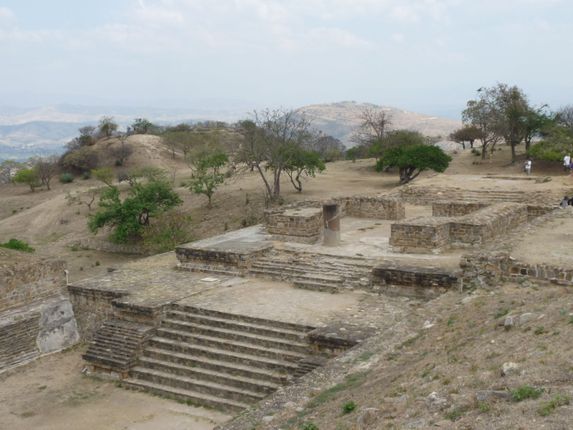

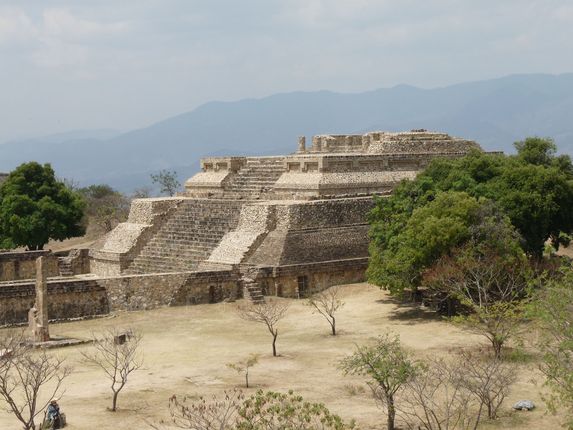

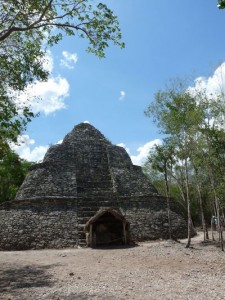

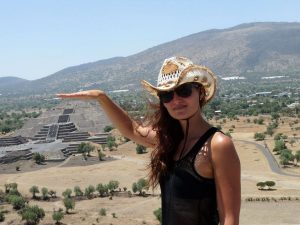
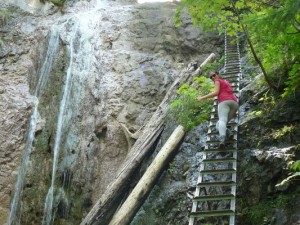
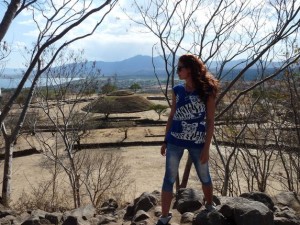
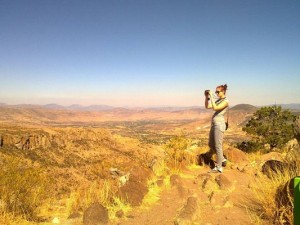
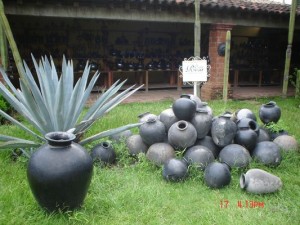
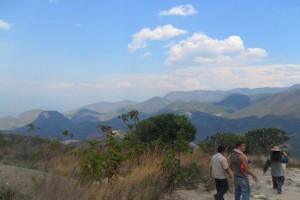
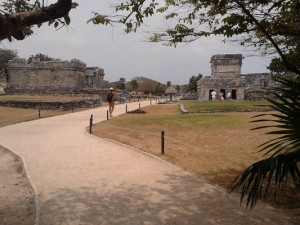
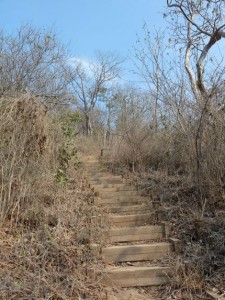
Leia
| #
Greetings from Florida! I’m bored to tears at work so I decided to browse your blog on my iphone during lunch
break. I enjoy the knowledge you present here and can’t wait to take
a look when I get home. I’m shocked at how quick your
blog loaded on my mobile .. I’m not even using WIFI, just 3G ..
Anyhow, fantastic blog!
Crazy Sexy Fun Traveler
| #
Thanks Leia, trying to do my best with the blog ;)
Leon Williams
| #
Great piece on Monte alban.This ancient civilization with roots back to the Olmecs leave so much to explore and questions to answer. Here is a piece on Monte Alan with David Childress. https://www.omec-arkofthecovenantmystery.com/featured/david-childress-on-monte-alban-and-the-olmecs/
Crazy Sexy Fun Traveler
| #
Thanks so much for widening the information with another article ;)
Octavio Ba Fo via Facebook
| #
And don´t forget the comida oaxaqueña, güera ! ;)
Alexandra Kovacova via Facebook
| #
Oh, I can imagine! It’s huge! But so peaceful and unbelievable!
Gay Mitra-Emami via Facebook
| #
I loved Monte Alban too! Such a vast expanse, I got so tired walking around with the baby. LOL.